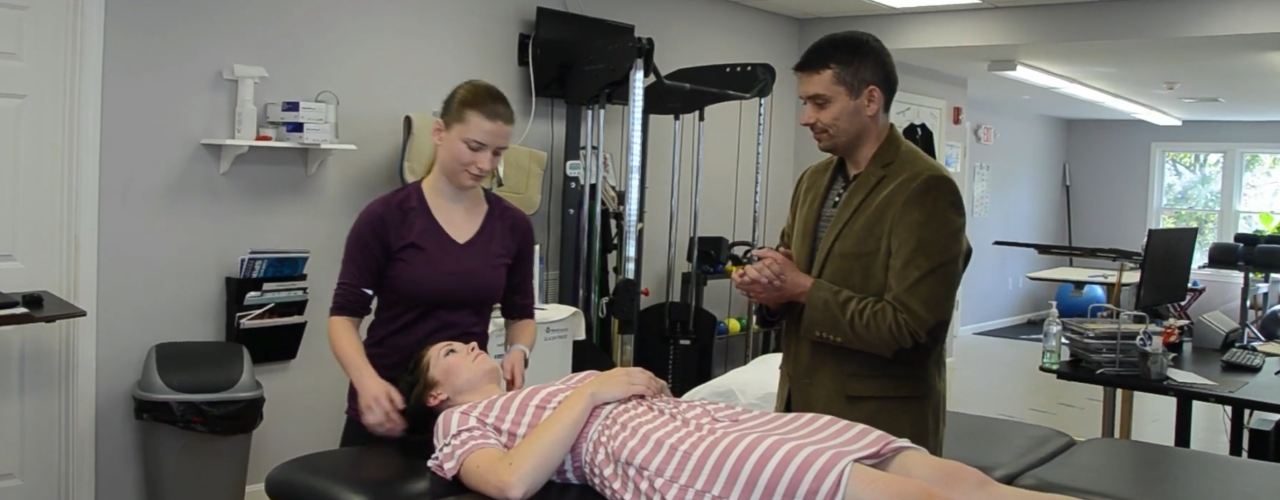This two-day course is comprised of 80% practical and 20% didactic training. The primary focus will be on the development of the psychomotor skills needed to safely and effectively deliver high-velocity, low-amplitude thrust (HVLAT) manipulation to the spinal column, more commonly known as spinal manipulation. Also included will be a brief background of HVLAT, guidelines that should direct safe practice of HVLAT, and a review of the evidence regarding HVLAT for spinal disorders.
HVLAT: Spine is the first step of a four-course series ending with practical and written certification exams. Applicants who successfully pass the certification process will be able to use the designation Cert. HVLAT (Certified in High-Velocity, Low-Amplitude Thrust) as part of their clinical education background.
Course Objectives
At the completion of this course, the participants will be able to:
- Define high-velocity, low-amplitude thrust (HVLAT).
- List three of the potential mechanisms by which HVLAT improves spinal pain.
- List two kinematic/kinetic research findings for HVLAT applied to each of the three primary regions (cervical, thoracic, lumbosacral) of the vertebral column.
- Identify two physiological and accessory levers used in HVLAT techniques for each of the three primary regions (cervical, thoracic, lumbosacral) of the spine.
- Describe the manipulative barrier/wall that is vital in performing safe, effective spinal manipulation.
- Identify the appropriate anatomical landmarks for targeting vertebral segments with HVLAT.
- List two examination findings that justify the use of spinal manipulation for neuromusculoskeletal conditions.
- Perform, given a patient case scenario, one HVLAT procedure to the spine that produces multiple, localized cavitations (“pops”).
- Justify not performing spinal manipulation treatment due to contraindications, given a patient case scenario.
- Explain the association between cervical spine manipulation and cervical artery dissection using two peer-reviewed sources.
- Discuss the efficacy of HVLAT for each of the three primary regions (cervical, thoracic, lumbosacral) of the spine using two peer-reviewed sources.
This course has been approved for 15 contact hours by all state boards where courses are held.
Course Schedule
HVLAT:Spine | Day 1
7:45 am Sign-in
8:00 am High-Velocity, Low-Amplitude Thrust (HVLAT): Definition, Mechanisms, Kinetics/Kinematics, Technique
9:00 am Cervical (C1-T1) Rotatory HVLAT – Hand-Hold
10:00 am Break
10:15 am Supine Cervicothoracic (C7-T3) AP HVLAT
11:00 am Cervical (C1-T1) Rotatory HVLAT – Chest-Hold
12:00 pm Lunch
1:00 pm The Audible Pop, When/Where to Manipulate
1:45 pm Prone Cervicothoracic Junction (C7-T3) HVLAT
2:45 pm Break
3:00 pm Sidelying Lumbosacral (T12-S1) Rotatory HVLAT
4:15 pm Supine Thoracic (T3-T6) AP HVLAT
5:00 pm Conclusion of Day 1
HVLAT:Spine | Day 2
7:45 am Sign-in
8:00 am Safe Practice of High-Velocity, Low-Amplitude Thrust
9:15 am Supine Mid to Lower Thoracic (T6-T11) AP with Flexion HVLAT
10:00 am Break
10:15 am Occipito-atlantal (C0-C1) Rotatory HVLAT
11:15 am Supine Upper Rib 1-6 AP and Lower Rib 7-12 AP with Flexion HVLAT
12:00 pm Lunch
1:00 pm Evidence for High-Velocity, Low-Amplitude Thrust for Spinal Disorders
1:45 pm Sidelying SIJ Rotatory HVLAT
3:00 pm Break
3:15 pm Supine Thoracolumbar Junction (T11-L3) AP “Drop” with Flexion HVLAT
4:00 pm Prone Mid-Thoracic Vertebral (T4-T9) and Rib (4-9) PA HVLAT
5:00 pm Issue Course Certificates, Conclusion of Day 2
Upcoming Courses
-

HVLAT: Spine – Salt Lake City, UT
March 30-31, 2024$605.00View Course -

HVLAT: Spine – New York, NY
April 13-14, 2024$605.00View Course -

HVLAT: Spine – Dallas, TX
May 18-19, 2024$585.00View Course -

HVLAT: Spine – Tampa, FL
July 13-14, 2024$585.00View Course -

HVLAT: Spine – San Diego, CA
November 2-3, 2024$585.00View Course


